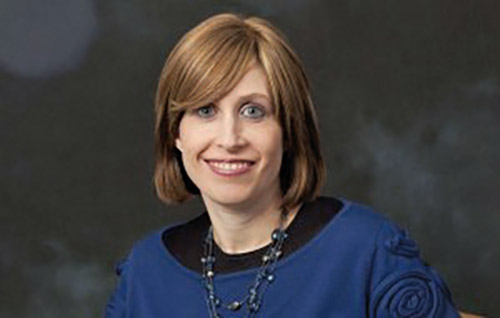
During the month of Adar, Lander College for Women, the Anna Ruth and Mark Hasten Women’s Division of Touro College, will be sharing the message of “Courage and Transformation: Timeless Messages from Tanach” in many communities. Five shuls in the Teaneck community will host female scholars from Lander College for Women, including Dr. Marion Stoltz-Loike, vice president and dean; Dr. Susan Weissman, chair of Judaic studies; Esther Boylan, assistant professor of Judaic studies; and Dr. Dana Fishkin, associate professor of humanities.
Congregation Bnai Yeshurun hosted Professor Boylan on March 1 in an address entitled “Women Confronting Authority: Esther, Avigail and the Miyaldot.” On March 7, the Young Israel of Teaneck hosted Dean Stolz-Loike, who addressed “Esther’s Strategy to Redeem a King.” On Shabbat, March 14, at 5:30 p.m., Congregation Keter Torah will host Dean Stoltz-Loike in a discussion of “Decoding Esther’s Plan,” and Professor Fishkin will explore the topic “A Woman of Valor in Sepharad & Ashkenaz: Medieval Approaches to Eshet Chayil” at Congregation Rinat Yisrael.
On Sunday morning, March 8, Dr. Susan Weissman addressed Congregation Beth Aaron. Dr. Weissman has served as the chair of Judaic studies at Lander College for Women for the past six years. She earned her Ph.D. from the Bernard Revel Graduate School of Yeshiva University, mentored by Rabbi Chaim Soloveichik. Her presentation, entitled “Esther as High Priest? Exploring the Affinity between Purim and Yom Kippur,” examined over 30 sources from Megilat Esther, Gemara, Midrashim and later commentators which suggested the significant linkage between the two holidays.
In citing sources brought down from contemporary thinkers, Weissman referred to Rav Hutner’s citing of the Vilna Gaon in his Sefer Pachad Yitzchak. The Gaon suggested that the two holidays combine together into one as they each represent one aspect of a chag. Purim is representative of the physical enjoyment of a chag by its celebrants through the consumption of meat and wine, while Yom Kippur represents the spiritual aspect of a chag which entails the service of God. Rav Mirsky cites the Abudraham who underlined the importance of wine in the unfolding of the Purim miracle as wine poured freely and abundantly at the three feasts which hosted the main drama of the Purim story. Rav Yaakov Emden believes the joy of the miracle of Purim is so great that we do not allude to the churban at any point during the chag.
Rav Gedalia Schorr in Or Gedalyahu refers to the Persian exile as one caused by our laxity in the sin of gilui arayot, immorality. The feasts described in the Megillah were physical orgies as well as gluttonous meals. Thus Esther, the heroine of the story, brings her modesty, inherited from her progenitor King Shaul, to counter this culture of immorality even at the expense of her own spiritual future. Esther’s courage in going before King Ahashverosh without being formally beckoned can be compared to the entrance of the Kohen Gadol into the Kodesh Hakodashim, the Holy of Holies, on Yom Kippur, unsolicited and without announcement. The contrast between the simple white garments worn by the Kohen Gadol on Yom Kippur and Esther’s elaborate clothing of royal purples and scarlets conveys the different circumstances but similar objective of both appealing on behalf of their people for salvation, physical and spiritual.
Rav Hutner points us to the crux of the union of the two chagim, Purim and Yom Kippur. On Yom Kippur we atone for our yetzer hara, internal flaws as represented by the seor ba’issa, the leaven in the dough, which symbolizes haughtiness. On Yom Kippur there is no bread baking, no puffiness and pride. On Purim we nullify our shi’abud malchiyot, enslavement to foreign nations, through emulating their base cultures. We dress up in our own festive garb and indulge in extra feasting and drinking to illustrate our pride in our Jewish ancestry and identity. Purim may even provide us with a higher level of spirituality as it provides us all with a private audience with the King.
By Pearl Markovitz













